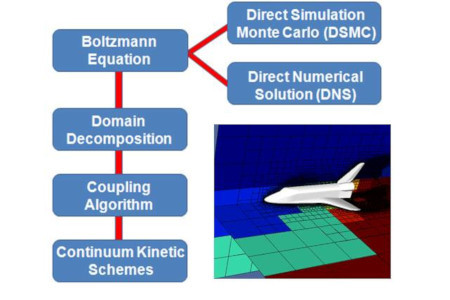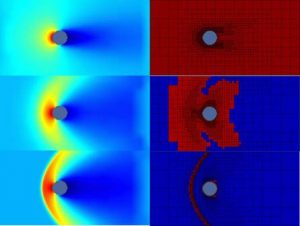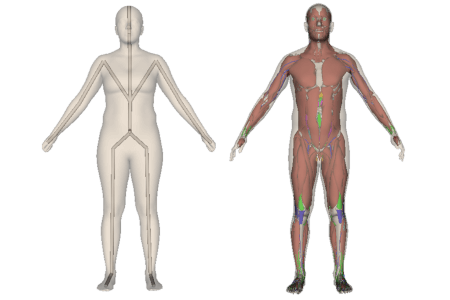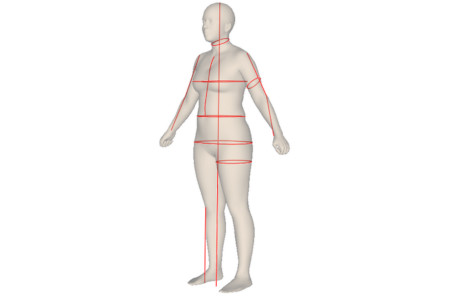Next Generation Computational Tool for High-Altitude Aerothermodynamics and Low-Speed Micro-Flows
A large variety of flow problems are characterized by simultaneous presence of continuum and rarefied flow domains. Computational simulations to define and resolve physical phenomena require appropriate models for both domains. Direct Simulation Monte-Carlo (DSMC) methods produce large statistical scatter making it difficult to couple with fluid models.
UFS has been developed for simulations of rarefied, transitional and continuum flows based on direct numerical solution of the Boltzmann equation coupled to Navier Stokes gas dynamics.
It uses a tree-based, dynamically adaptive mesh around complex geometries, and a local algorithm switching strategy.
High efficiency and numerical stability are attained by using similar computational techniques for kinetic and continuum solvers, and by employing an intelligent domain decomposition algorithm.
Features
- Adaptive Algorithm Coupled continuum and rarefied flow solver capable solving flows in all regimes with no volume grid generation requirements and minimum user input
- Direct Numerical Solver (DNS) of the Boltzmann Equation is used in regions of moderate and high local Knudsen number, while kinetic schemes of gas dynamics are used elsewhere.
- Direct solver for BTE with different interaction potentials.
- Explicit solver for the kinetic Euler and NS equations.
- Compact, flexible problem definition & case set-up, with Spatially-varying boundary and initial conditions through input file.
- Plasma, Chemistry, Electron Kinetics, Radiation & Turbulence Models developed in UFS framework
Applications:
- Predicting aero coefficients for missile debris fragments
- Lunar lander plume/soil interaction
- Hypersonic vehicle design
- Micro-UAV design







